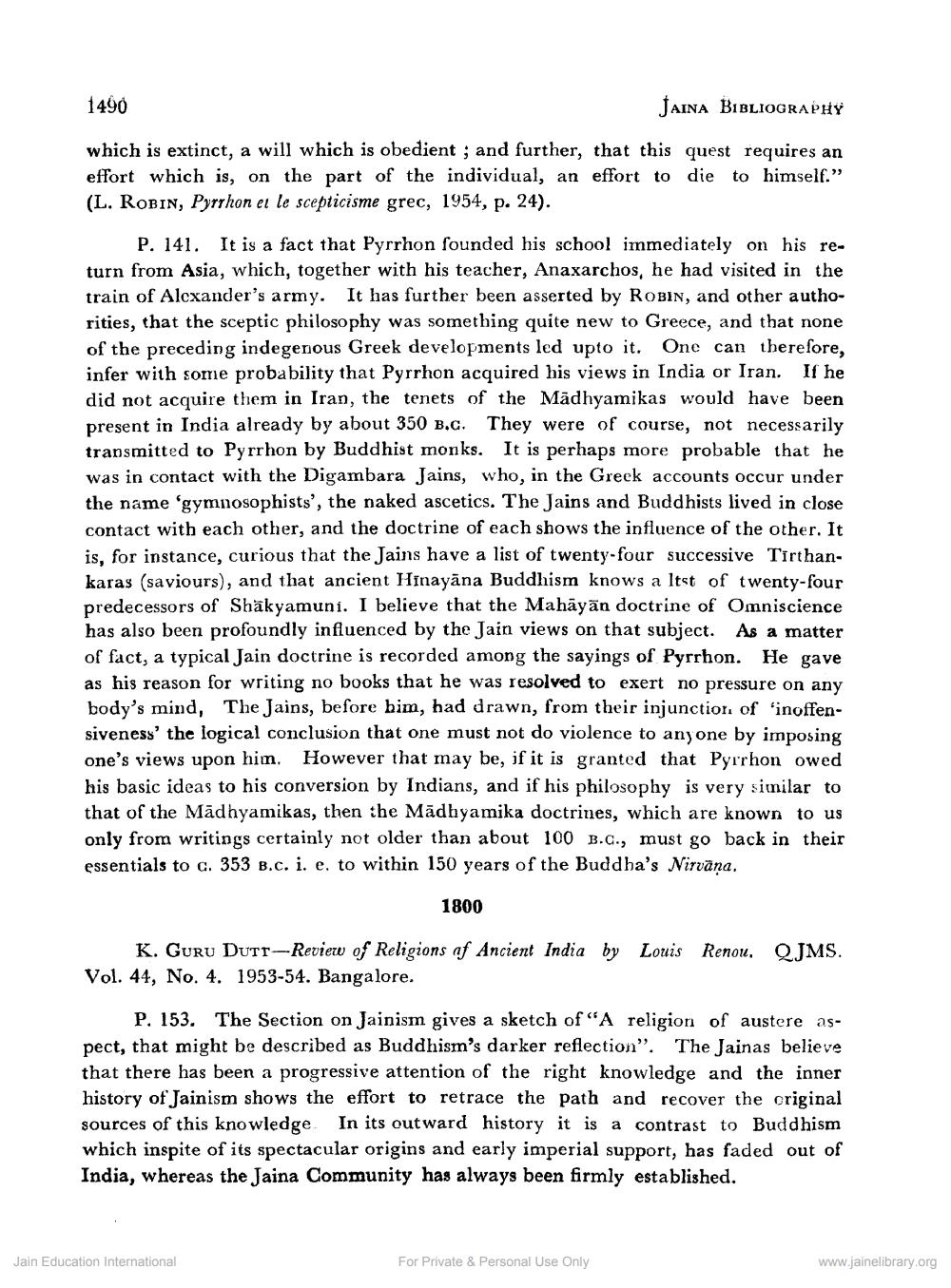________________
1490
JAINA BIBLIOGRAPHY
which is extinct, a will which is obedient ; and further, that this quest requires an effort which is, on the part of the individual, an effort to die to himself." (L. ROBIN, Pyrrhon et le scepticisme grec, 1954, p. 24).
P. 141. It is a fact that Pyrrhon founded his school immediately on his return from Asia, which, together with his teacher, Anaxarchos, he had visited in the train of Alexander's army. It has further been asserted by ROBIN, and other authorities, that the sceptic philosophy was something quite new to Greece, and that none of the preceding indegenous Greek developments led upto it. One can therefore, infer with some probability that Pyrrhon acquired his views in India or Iran. If he did not acquire them in Iran, the tenets of the Madhyamikas would have been present in India already by about 350 B.C. They were of course, not necessarily transmitted to Pyrrhon by Buddhist monks. It is perhaps more probable that he was in contact with the Digambara Jains, who, in the Greek accounts occur under the name 'gymnosophists', the naked ascetics. The Jains and Buddhists lived in close contact with each other, and the doctrine of each shows the influence of the other. It is, for instance, curious that the Jains have a list of twenty-four successive Tirthankaras (saviours), and that ancient Hmayana Buddhism knows a Itst of twenty-four predecessors of Shakyamuni. I believe that the Mahayan doctrine of Omniscience has also been profoundly influenced by the Jain views on that subject. As a matter of fact, a typical Jain doctrine is recorded among the sayings of Pyrrhon. He gave as his reason for writing no books that he was resolved to exert no pressure on any body's mind, The Jains, before him, had drawn, from their injunction. of 'inoffensiveness' the logical conclusion that one must not do violence to anyone by imposing one's views upon him. However that may be, if it is granted that Pyrrhon owed his basic ideas to his conversion by Indians, and if his philosophy is very similar to that of the Madhyamikas, then the Madhyamika doctrines, which are known to us only from writings certainly not older than about 100 B.C., must go back in their essentials to c. 353 B.c. i. e. to within 150 years of the Buddha's Nirvana.
1800
K. GURU DUTT-Review of Religions af Ancient India by Louis Renou. QJMS. Vol. 44, No. 4. 1953-54. Bangalore.
P. 153. The Section on Jainism gives a sketch of "A religion of austere aspect, that might be described as Buddhism's darker reflection". The Jainas believe that there has been a progressive attention of the right knowledge and the inner history of Jainism shows the effort to retrace the path and recover the original sources of this knowledge. In its outward history it is a contrast to Buddhism which inspite of its spectacular origins and early imperial support, has faded out of India, whereas the Jaina Community has always been firmly established.
Jain Education International
For Private & Personal Use Only
www.jainelibrary.org




